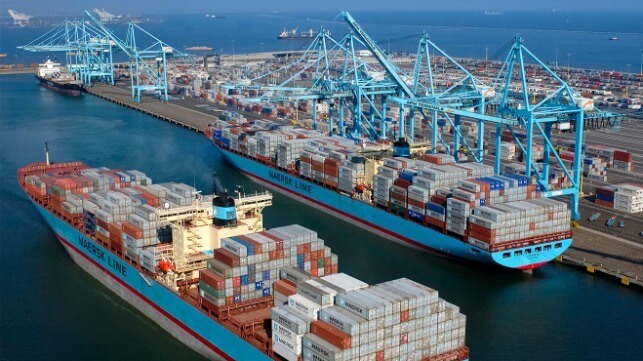ILWU Members Approve Long-Awaited Labor Contract for West Coast Ports

The rank-and-file members of the International Longshore and Warehouse Union (ILWU) have voted to approve the tentative labor agreement negotiated by union leadership with the Pacific Maritime Association (PMA) in June. The vote marks the end of a year-long period of uncertainty for shippers and West Coast ports, particularly the primary gateway ports of Los Angeles and Long Beach.
“The negotiations for this contract were protracted and challenging,” said ILWU International President Willie Adams in a statement. “I am grateful to our rank and file for their strength, to our negotiating committee for their vision and tenacity, and to those that supported giving the ILWU and PMA the space that we needed to get to this result.”
The on-again, off-again talks proceeded slowly and continued long after the expiration of the previous labor contract. The deliberations were marked by several local ILWU labor actions in LA and Seattle, raising concerns that a broader strike could occur. In June, PMA and ILWU finally hammered out a deal with the assistance of acting U.S. Secretary of Labor Julie Su, who stayed with both sides in LA for three days as they talked through the final details.
ILWU did not release the details, but said that the new deal would provide good-paying jobs while improving wages and pensions. According to Reuters, the improvements include a 32 percent pay increase for ILWU members over the course of the next six years. PMA reports that the average earnings for full-time ILWU longshoremen are currently about $200,000 per year, so the raises would bring average dockworker wages to about $260,000 per year by 2029 (not including union clerks and foremen, who earn more.) Employer-paid benefits packages add another $100,000 per year, including 401k, guaranteed-benefit pensions and health insurance coverage.
After reaching this tentative deal with PMA, the ILWU leadership took it back to their 20,000 members for ratification. Each of the union's 29 locals up and down the West Coast considered the contract and took a vote. On August 31, the ILWU's balloting committee said that 75 percent of the union voted in favor of the new labor agreement.
The last major dispute between the ILWU and the PMA occurred in 2014-2015, and it resulted in protracted slowdowns and heavy congestion at LA and Long Beach. This time, to hedge against the risk of another long labor action, cargo owners and shipping lines began diverting increasing volumes to ports on the East Coast and Gulf Coast - improving the numbers for ports like Savannah and Houston, but cutting into the market share for LA/Long Beach.
Now that a new labor agreement is in place, the twin San Pedro Bay ports plan to work hard to bring volume back to the West Coast.
"We've got to go back out there now and bring some strategy and value to the marketplace, because about 15 percent of our cargo has moved away from us," Port of LA chief Gene Seroka told Bloomberg in June. "We've got to recalibrate this and have an all-out industry push to bring this cargo back."
